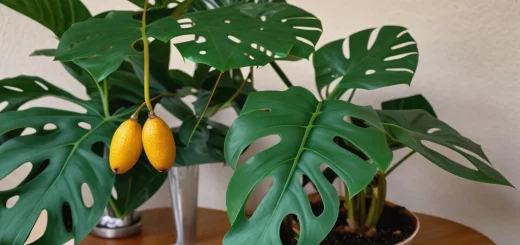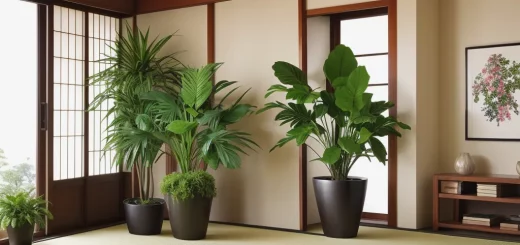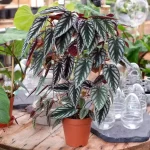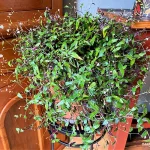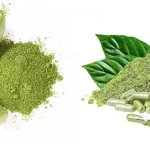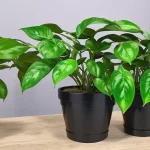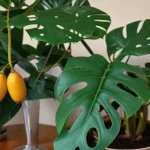How to pollinate indoor plants in 2023
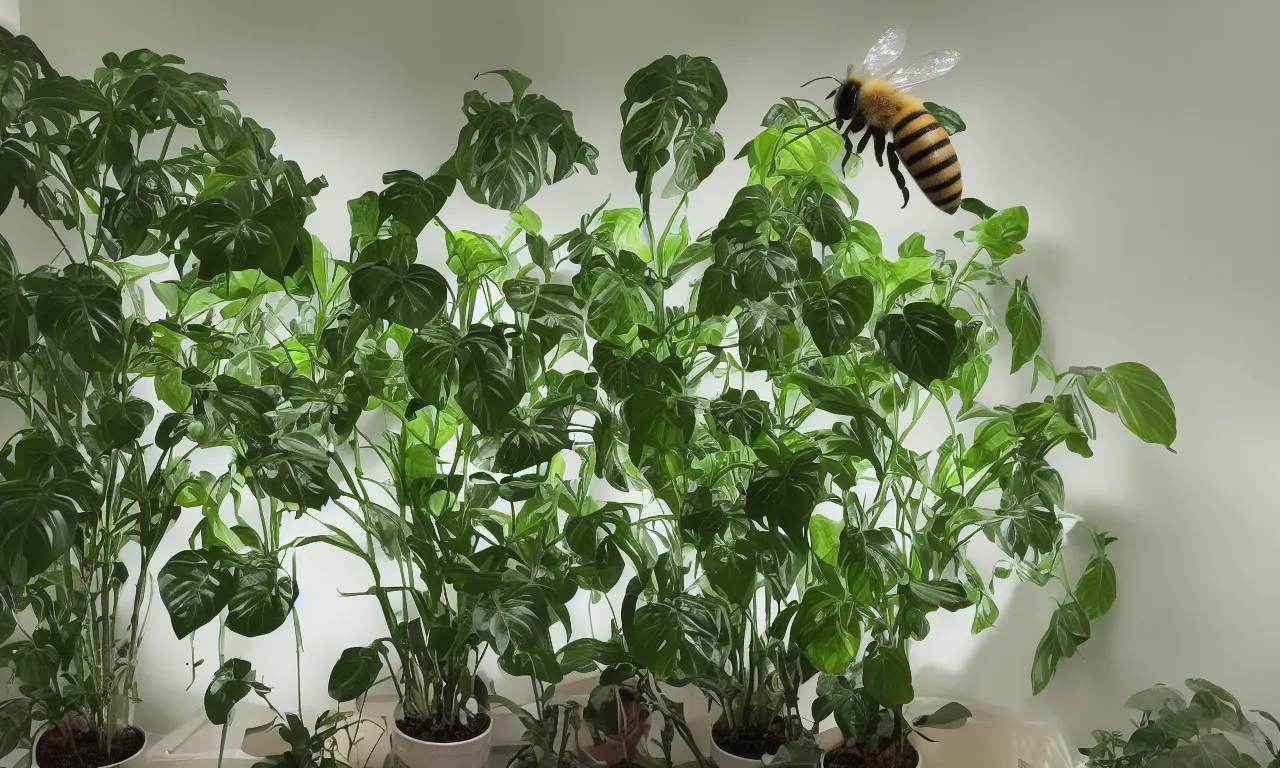
Introduction to pollinate indoor plants
Pollination is a vital process in the life cycle of plants, and it plays a significant role in the reproduction and overall health of indoor plants. Understanding the significance of pollination is crucial for every plant enthusiast.
When it comes to indoor plants, they face unique challenges compared to their outdoor counterparts. With limited access to natural pollinators and varying environmental conditions, indoor plants require extra attention and care to ensure successful pollination.
The Basics of Pollination
What is pollination?
Pollination is the transfer of pollen from the male reproductive organ (stamen) to the female reproductive organ (pistil) of a flower. In simple terms, it is the process that allows plants to produce fruits, seeds, and ensure their survival and propagation.
Different methods of plant pollination
There are various methods of pollination, including self-pollination and cross-pollination. Self-pollination occurs when the pollen from a flower’s stamen reaches the pistil of the same flower or another flower on the same plant. Cross-pollination, on the other hand, involves the transfer of pollen between flowers of different plants.
Exploring the role of pollinators
Pollinators, such as bees, butterflies, birds, and even wind, play a crucial role in the pollination process. They aid in transferring pollen from the stamen to the pistil, promoting fertilization. In the absence of natural pollinators, indoor plants require human intervention to ensure successful pollination.
The Importance of Pollination for Indoor Plants
Enhancing plant reproduction and growth
Successful pollination leads to the formation of fruits and seeds, which are vital for the reproduction and growth of indoor plants. Without proper pollination, your plants may struggle to thrive and produce healthy offspring.
Ensuring genetic diversity
Pollination helps in maintaining genetic diversity within plant populations. Cross-pollination, in particular, allows for the exchange of genetic material between different plants, resulting in stronger and more resilient offspring.
Boosting overall plant health
Pollination is not only essential for reproduction but also for the overall health of indoor plants. It promotes better nutrient absorption, vigorous growth, and improved resistance to pests and diseases. By mastering the art of pollination, you can significantly enhance the health and vitality of your indoor plants.
Identifying Indoor Plants in Need of Pollination
Recognizing signs of inadequate pollination
Inadequate pollination can manifest in various ways. Look for signs such as flowers falling off prematurely, stunted fruit development, or a lack of seed production. These indications suggest that your indoor plants may require assistance in the pollination process.
Understanding plant species-specific requirements
Each indoor plant species has its own unique pollination requirements. Some plants are self-pollinating, while others rely on cross-pollination. Researching and understanding the specific needs of your indoor plants will help you provide the necessary care to ensure successful pollination.
Natural Pollination Methods for Indoor Plants
Encouraging natural pollinators indoors
Bringing natural pollinators indoors can greatly benefit your plants. Consider opening windows or installing screens to allow beneficial insects like bees and butterflies to enter your space. Their presence will aid in the pollination process and promote a healthy indoor garden ecosystem.
Creating a conducive environment for pollinators
To attract and support natural pollinators, provide them with a suitable environment. Plant nectar-rich flowers and herbs near your indoor plants to entice these helpful creatures. Additionally, provide a water source and shelter for them to thrive and contribute to the pollination process.
Utilizing companion plants to attract pollinators
Companion planting involves strategically placing certain plants near each other to enhance overall growth and health. Select companion plants that attract pollinators and place them near your indoor plants. This technique can create a synergistic environment where pollination thrives.
Manual Pollination Techniques for Indoor Plants
Hand pollination basics
When natural pollinators are scarce or inaccessible, manual pollination becomes necessary. Hand pollination involves manually transferring pollen from the stamen to the pistil using a gentle touch or a small tool. This technique allows you to control the pollination process and ensure successful fertilization.
Tools and techniques for manual pollination
To successfully perform manual pollination, you may need tools such as small brushes, cotton swabs, or even your fingertips. Gently transfer the pollen from the stamen to the pistil, making sure to avoid damaging the flower or its reproductive organs. Repeat this process for each flower that requires pollination.
Step-by-step guide to successful manual pollination
- Identify flowers that require pollination.
- Identify the reproductive organs of the flower, namely the stamen and pistil.
- Collect pollen from the stamen using a brush or cotton swab.
- Transfer the collected pollen to the pistil of the same flower or another flower.
- Repeat the process for each flower that requires pollination.
- Monitor the progress of pollination and observe for signs of successful fertilization.
Ensuring Pollen Availability for Indoor Plants
Selecting the right plants and cultivars
Choosing plants and cultivars that are known to be good pollinators is crucial for ensuring pollen availability. Research different plant varieties and select those that are known for producing an abundant amount of pollen, increasing the chances of successful pollination.
Maximizing pollen production
To promote pollen production, ensure that your indoor plants receive optimal nutrition and care. Adequate sunlight, appropriate watering, and a balanced fertilizer regime can all contribute to the healthy production of pollen, increasing the chances of successful pollination.
Storing and utilizing collected pollen
If you have collected excess pollen, you can store it in a clean, dry container in a cool and dark place. When needed, you can use a small amount of stored pollen for manual pollination. However, fresh pollen is generally more effective, so collecting it just before use is preferable.
Overcoming Pollination Challenges in Indoor Environments
Addressing inadequate airflow and still conditions
Indoor environments often lack the natural airflow necessary for efficient pollination. To address this challenge, make use of fans or gentle air circulation devices to mimic the gentle breeze that aids in pollen transfer. Avoid strong air currents that may dislodge the pollen or damage the flowers.
Tackling humidity issues affecting pollination
Humidity levels can impact pollination outcomes. In overly dry conditions, flowers may produce less nectar, leading to reduced pollinator attraction. Conversely, excessive humidity can promote the growth of fungi or mold, negatively affecting pollination. Monitor and adjust humidity levels to create an ideal environment for successful pollination.
Dealing with potential pest and disease concerns
Pests and diseases can interfere with the pollination process by damaging flowers or preventing pollinators from accessing them. Implement effective pest management practices, such as regular inspections and appropriate treatments, to keep your plants healthy and protect them from potential pollination obstacles.
The Role of Light in Indoor Plant Pollination
Understanding the relationship between light and pollination
Light plays a crucial role in the pollination process as it affects the growth and development of flowers. Adequate light exposure ensures proper flower formation, promotes pollen production, and attracts pollinators. Without sufficient light, indoor plants may face challenges in achieving successful pollination.
Optimizing light conditions for successful pollination
Ensure that your indoor plants receive the appropriate amount and quality of light for optimal pollination. Place plants near windows or use artificial grow lights to provide sufficient light intensity and duration. Consider the specific light requirements of your plant species to create the ideal conditions for successful pollination.
Timing and Frequency of Indoor Plant Pollination
Determining the ideal time for pollination
Timing is crucial when it comes to indoor plant pollination. Most plants have specific periods of peak receptivity when their flowers are most likely to be successfully pollinated. Learn about the flowering patterns and reproductive cycles of your indoor plants to identify the ideal window for pollination.
Establishing the appropriate frequency of pollination
The frequency of pollination depends on the specific needs of your indoor plants. Some plants require only a single pollination event to achieve successful fertilization, while others may benefit from multiple pollinations throughout the flowering period. Observe your plants closely and adapt the frequency of pollination accordingly.
The Impact of Temperature on Indoor Plant Pollination
Analyzing the role of temperature in pollination
Temperature influences the pollination process by affecting the activity levels of pollinators, pollen viability, and flower development. Extreme temperatures, both hot and cold, can reduce the effectiveness of pollination. Understanding the temperature preferences of your indoor plants will help you create optimal conditions for successful pollination.
Regulating temperature for optimal pollination conditions
Maintaining consistent temperature levels in your indoor environment is vital for successful pollination. Avoid exposing plants to extreme temperature fluctuations and provide them with temperatures within their preferred range. Monitor and adjust your indoor climate to ensure ideal conditions for pollination.
Pollination Techniques for Specific Indoor Plant Species
Pollination tips for flowering houseplants
Flowering houseplants, such as orchids or African violets, often require specific pollination techniques. Research the specific requirements of your flowering houseplants and apply the appropriate manual pollination methods. Utilize the knowledge of each plant’s unique reproductive structure to achieve successful pollination.
Pollinating fruit-bearing indoor plants
Fruit-bearing indoor plants, like tomatoes or peppers, rely on successful pollination for the formation of fruits. These plants require careful attention to ensure proper pollination, as they often rely on specific pollinators or require manual assistance. Learn about the pollination requirements of your fruit-bearing plants to ensure bountiful harvests.
Approaches to pollinating unique indoor plant species
Some indoor plants have unique pollination requirements due to their specialized reproductive structures or reliance on specific pollinators. Research these plant species and implement appropriate pollination techniques, such as hand pollination or attracting specific pollinators, to increase the chances of successful reproduction.
The Benefits of Cross-Pollination for Indoor Plants
Introducing cross-pollination
Cross-pollination occurs when pollen from one plant fertilizes the flowers of another plant of the same species. This process leads to genetic diversity, promoting the health and adaptability of indoor plant populations. Encouraging cross-pollination can result in stronger and more resilient indoor plants.
Advantages and outcomes of cross-pollination
Cross-pollination brings several advantages to indoor plants. It increases genetic diversity, leading to improved resistance against pests and diseases. Additionally, cross-pollination can enhance the overall quality of fruits, flowers, and seeds produced by indoor plants, resulting in more desirable and vigorous offspring.
Common Mistakes to Avoid in Indoor Plant Pollination
Missteps that hinder successful pollination
Avoid these common mistakes that can hinder successful pollination:
- Neglecting the importance of providing suitable pollinator attractants.
- Overlooking the need for proper timing and frequency of pollination.
- Failing to monitor and adjust environmental conditions for optimal pollination.
- Not researching the specific requirements of each indoor plant species before attempting pollination techniques.
Tips for preventing common pollination errors
To increase the chances of successful pollination, consider these tips:
- Research and understand the pollination requirements of your indoor plants.
- Develop a pollination schedule based on the specific needs of each plant species.
- Provide a conducive environment for pollinators, both natural and manual.
- Regularly monitor your plants’ progress and make adjustments as needed.
Monitoring and Assessing Indoor Plant Pollination
Tracking pollination progress
Keep a close eye on your indoor plants to monitor the progress of pollination. Observe for signs of successful fertilization, such as fruit development or seed production. Regularly check flowers for visible pollen transfer and growth.
Assessing the impact of successful pollination on plant health
Successful pollination greatly influences the overall health and development of indoor plants. Assess the impact by observing improved growth, increased fruit or seed production, and enhanced resistance to pests and diseases. Thriving plants indicate the effectiveness of your pollination techniques and efforts.
Summary: Achieving Optimal Pollination for Indoor Plants
To master the art of pollinating indoor plants, remember these key techniques and considerations:
- Understand the basics of pollination and the importance it holds for indoor plant health.
- Recognize signs of inadequate pollination and the species-specific requirements of your plants.
- Promote natural pollination by attracting pollinators or utilize manual pollination techniques.
- Ensure an adequate supply of pollen and overcome challenges in the indoor environment.
- Optimize light, temperature, timing, and frequency for successful pollination.
- Tailor pollination techniques for different indoor plant species and explore the benefits of cross-pollination.
- Monitor progress, assess the impact of successful pollination, and make adjustments as needed.
Frequently Asked Questions (FAQs)
how to pollinate indoor plants?
Pollinating indoor plants manually can be essential, especially if the plants are naturally pollinated by outdoor insects or the wind. Here’s how to manually pollinate common indoor plants:
Identify the Flowers:
- First, determine whether the plant species has male and female flowers on the same plant (monoecious) or on separate plants (dioecious). Also, some plants have flowers that are perfect, meaning they contain both male and female reproductive parts.
Gather Materials:
- A small soft brush (like a paintbrush or makeup brush).
- Alternatively, a cotton swab or Q-tip can also work.
- A magnifying glass to see the plant parts better (optional).
- A gentle fan (optional, for wind-pollinated plants).
Procedure:
- For plants with separate male and female flowers:
- Identify the male flower, which typically has pollen-covered anthers.
- Touch the brush or cotton swab to the anthers to pick up the pollen.
- Transfer this pollen to the female flower by gently touching the brush or swab to the stigma of the female flower.
- For plants with perfect flowers:
- Simply touch the anthers to pick up pollen with your brush or swab.
- Transfer the pollen directly to the stigma of the same flower.
- For wind-pollinated plants: If you have plants that are typically pollinated by the wind (like some grasses or grains), you can mimic this by using a gentle fan to blow on the plants or by shaking the plants gently.
Repeat the Process: Depending on the number of flowers, you might need to repeat the process every couple of days or as new flowers bloom.
Maintain Conditions: After pollination, ensure that the plant continues to receive the appropriate amount of light and water to support fruit or seed development.
Note on Fruit Plants: If you’re attempting to pollinate indoor fruiting plants, like tomatoes or peppers, the fruit will begin to develop if pollination was successful. If the flower falls off without fruiting, pollination might not have been successful.
Tips:
- Pollinate during the same time of day when the plant would naturally be pollinated outdoors.
- Ensure your hands and tools are clean to avoid introducing any pathogens to the flowers.
- If you know the specific type of plant you’re trying to pollinate, it might be helpful to do a quick search for any species-specific pollination tips or nuances.
Remember, while manual pollination can enhance the chances of fruit or seed production in indoor plants, the overall health of the plant, adequate lighting, watering, and feeding are also crucial for success.
How often should I hand pollinate my indoor plants?
The frequency of hand pollination varies depending on the specific needs of your indoor plants. Observe the reproductive cycles of your plants and perform manual pollination as needed. Some plants may require only one hand pollination event, while others may benefit from repeated pollinations throughout the flowering period.
Can I use artificial pollination methods for indoor plants?
While manual pollination is the most common method of artificial pollination for indoor plants, there are other techniques you can explore. For example, using a small paintbrush to transfer the pollen between flowers or using tools specifically designed for artificial pollination can also be effective.
Are there any risks associated with manual pollination?
Manual pollination itself poses minimal risks if performed correctly. However, ensure that the tools you use are clean and do not introduce harmful substances to the plants. Avoid excessive physical pressure that could damage the flowers, and be gentle when transferring pollen to prevent any unintended damage.
What are some natural pollinators that can be attracted indoors?
To attract natural pollinators indoors, consider planting flowers or herbs that are known to be attractive to bees, butterflies, or hummingbirds. Some examples include lavender, bee balm, or zinnias. Additionally, providing a water source and suitable shelter will encourage these beneficial creatures to visit your indoor garden.
Conclusion
Pollination is a critical aspect of indoor plant care that should not be underestimated. By mastering the art of pollination, you can empower yourself as an indoor plant enthusiast to cultivate thriving plants that produce bountiful flowers and fruits. Understand the unique requirements of each plant species, implement suitable pollination techniques, and create an ideal environment that supports pollinators. With consistent care and attention, you can amplify the health and vitality of your indoor plants, resulting in a more fulfilling gardening experience.
